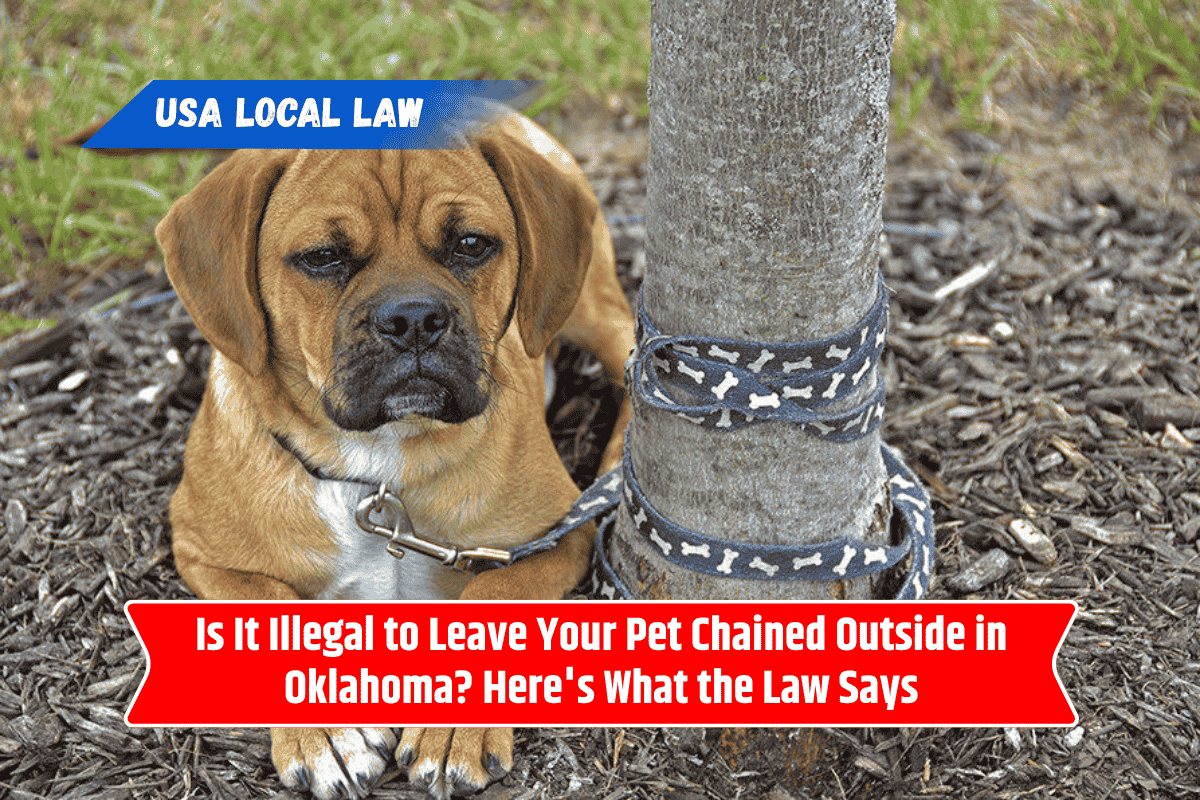If you’re a pet owner in Oklahoma, you might be wondering whether it’s legal to leave your dog or pet chained outside for long periods. While many people still use chains or tethers to keep their pets in place, doing so without understanding the law can lead to legal trouble—and, more importantly, animal suffering.
Let’s break down what Oklahoma law says about this practice and how you can ensure you’re treating your pets lawfully and humanely.
What Does Oklahoma Law Say About Tethering Pets?
In Oklahoma, it’s not completely illegal to tether or chain a pet outside—but there are rules and restrictions to prevent cruelty or neglect.
According to Oklahoma animal welfare laws, it is illegal to treat animals in a cruel or inhumane way, and this includes how they’re confined or restrained. Chaining a pet in a way that causes harm, suffering, or lack of access to shelter, water, or food can be considered animal cruelty.
Some key points include:
Tethering must not injure the animal (no choking, open wounds, or limited movement).
The pet must have access to clean water, food, and proper shelter.
The tether or chain must allow the animal to move freely and safely.
The animal must not be tethered during extreme weather conditions (like freezing cold or high heat).
So while tethering is not automatically illegal, doing it irresponsibly can result in fines or even criminal charges under Oklahoma’s cruelty laws.
City and County Laws May Be Stricter
Many cities in Oklahoma have passed their own local ordinances that are stricter than the state laws. For example:
Oklahoma City: It’s illegal to tether a dog as a primary method of restraint. You can’t leave your dog chained up for long periods unattended.
Tulsa: Allows tethering but with limits. The tether must be at least 10 feet long, not cause pain, and allow access to essentials.
Norman and Edmond: Have regulations around how long a pet can be tethered and in what conditions.
Always check your local city or county laws to be sure. Even if the state allows tethering, your local area might not.
What Counts as Animal Cruelty When Tethering?
If a pet is:
Chained up 24/7 with no exercise
Left without food, water, or shelter
Suffering from visible injuries caused by the chain or collar
Tied up during freezing nights or blazing summer days
Then the situation could legally be defined as cruelty or neglect.
Under Oklahoma Statutes Title 21 §1685, animal cruelty is a criminal offense and can result in:
Fines
Jail time
Removal of the animal from the owner’s care
Safer Alternatives to Tethering
Instead of chaining a pet for long periods, consider:
Fenced yards where your pet can move freely
Crate training for indoors when unsupervised
Tethering under supervision for short periods only
Building a covered dog run that allows safe movement
Using these alternatives keeps your pet safer and keeps you on the right side of the law.
What to Do If You See an Abused or Chained Pet
If you notice a pet that’s being chained in a harmful or unsafe way:
Take a photo or video (from a safe distance)
Record the location and details
Report it to local animal control or police
You can also contact the Oklahoma Humane Society or other animal welfare groups
Reporting isn’t just the right thing to do—it can save a pet’s life.
In Oklahoma, chaining a pet outside isn’t automatically illegal—but it must be done responsibly and humanely. Many cities have their own rules that make it either restricted or banned, especially if the pet is left unattended or in poor conditions.
Understanding and following these laws not only protects your pet but also keeps you from facing fines or criminal charges. If you love your pet, it’s worth taking the time to make sure you’re doing things the right way.
